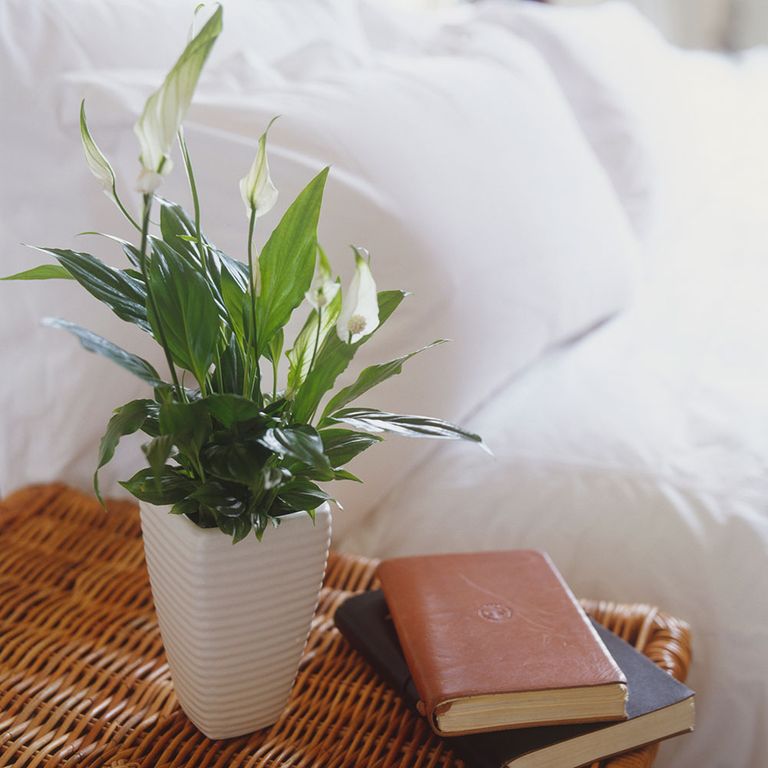Tips and Advice
Archive of Creation magazine articles published on our website.
The best indoor plants and how to care for them
Some people have magic fingers when it comes to keeping and watering houseplants, others feel like they only have to look at a succulent, spider plant or orchid for it to wither and die.
Luckily, we’ve consulted gardening expert Stephanie Donaldson to find out how often you should water the most popular houseplants, and where to keep them in the house in order for them to flourish.
Succulents
Smooth, fleshy succulent houseplants are a trendy decorative addition to any home.
Popular succulents are Living Stones or Lithops, which grow just a few centimetres above the soil surface and the Money Plant, Crassula ovata, which has smooth leaves and as it matures become tree-like with a trunk and branches.
How to keep it alive: Succulents need plenty of light, but be careful not to let them get chilled or sun burned when growing them on the windowsill. If your plant starts to “stretch”, getting tall and lanky with space between the leaves, you can be sure that it isn’t getting enough light. A south-facing window, or at least a half a day in an east-facing window is best and rotating the plant weekly will even up growth if they are bending toward the light.
Grow them in gritty, free-draining compost and allow them to dry out completely between watering. Never let them stand in water – they won’t like it! One feed in spring, with a general houseplant fertiliser, usually suffices.
Cactus
It’s easy to get hooked on cacti as their spiked, ridged, tall, squat and hairy forms are very collectable.
Bunny eared Opuntia cacti produces prickly pads and the Barrel Cactus with its bright yellow spines are perfect for growing on windowsills. Moon cactus are also popular and especially with children as they are fun and funky plants that have a small round top cactus, which can be red, orange of yellow, grafted on top of a taller green base specimen.
How to keep it alive: These undemanding plants will withstand most maltreatment except for heavy handed watering and feeding. They are happiest in a really sunny spot (well, it makes sense given their desert origins!)
How to grow cacti: Like succulents, cacti need very gritty and free-draining compost and they should be watered with tepid rainwater whenever the compost dries out fully from your last watering. When this happens water well again and don’t give any more until the compost has dried out once more. Just remember cacti only need sufficient water to prevent them from shrivelling.
Fern
Ferns come in a wide variety of forms and whilst not all ferns make good houseplants, the maidenhair, asparagus and sword ferns will grow in a cool, shady spot such as a bathroom or kitchen.
How to keep it alive: These ferns grow best in bright light, with some shading from midday sun. Poor light can be tolerated for short periods of time if topped up daily with artificial light. Plants will continue to grow all year round in ordinary room temperature but will cease at 10C. Below 10C it’s likely that the plant will die.
How to grow ferns: Keep the compost permanently moist by frequent watering using tepid rainwater. In hot, dry air mist those with thin leaves such as the ever-popular Boston fern occasionally to prevent the leaves turning brown and drying to a crisp. Throughout the spring and summer, give all ferns a dilute liquid feed every fortnight.om shrivelling.
Spider plant
The popular spider plant, Chlorophytum comosum ‘Variegatum’, like a cool, light position away from direct sunlight, otherwise their foliage will fade and weaken. The variety Lemon is a twist on the classic with zingy lemon-green foliage and Chlorophytum saundersiae Starlight has variegated grass-like foliage and small lily-like flowers.
How to keep it alive: In spring and summer, while the plant is growing and producing plantlets, water freely, allowing the compost to almost dry out between watering. In winter reduce the amount of water, keeping the compost almost dry in low temperatures. Mist the foliage frequently to keep the leaves clean.
How to grow spider plants: Feed fortnightly from spring until late summer, using a half-strength liquid fertiliser. Without feeding, the tips of the leaves will quickly turn brown, marring the appearance of the plant and retarding its growth.
Yucca plant
Yucca elephantipes is an exotic and easy-going houseplant that will grow equally in a sunbaked, centrally heated room and cool, semi-shaded spot. Also available as a variegated form, they are specially grown from sections of trunk which, when planted, grow roots and leaves. Look for plants that have several trunks potted together in one pot for a strong shape that will make an impressive display in a spacious room.
How to keep it alive: Yucca needs good light, but no direct sunlight as it can damage the leaves. Wipe the leaves with a damp cloth to remove dust but do not use leaf shine. Water thoroughly during the growing season but then allow the compost to dry out considerably before applying more. Feed every two weeks from spring to autumn.
How to grow yucca plants: As you might be able to tell from looking at them, these houseplants can be top-heavy, so ensure they’re planted in a soil-based compost so that they don’t tip over when dry!
Peace lily
Where ventilation is poor the air we breathe becomes stale and stagnant. Air conditioning might resolve the problem but growing plants such as the peace lily, which mimic the way that nature cleans the earth’s atmosphere, is a good way to purify and revitalise the air.
This lush tropical foliage plant produces beautiful white sail-like flowers on stiff, erect stalks. The variety Mauna Loa grows to 90cm making it an imposing floor plant for a semi-shaded spot in a warm room. Other varieties available in the UK are Sweet Rocco, which grows to 30cm tall and Sweet Sebastiano that towers to 120cm.
How to keep it alive: Peace lily needs good light, but not direct sunlight, to encourage the white flowers to bloom. Most peace lilies die from over-watering, so only water when the compost feels dry to the touch
Moth Orchid
n easy plant for the first-time orchid grower, the moth orchid can be bought in bloom any time throughout the winter and spring. Those with white flowers are popular and also the pink varieties Happy Rose and Ravello plus unusual Polka Dots, which has glowing white petals irregularly splotched with reddish purple.
How to keep it alive: Give it pride of place in a lightly shaded spot with a temperature around 21C. Allow the compost to almost dry out between watering and mist often but avoid getting water on the blooms as they easily mark. After flowering, cut the stalk just below the knobbly joint that produced the first flower.
These exotic beauties should not be seen as a luxury but as an essential and especially for offices where they will remove the potentially dangerous fumes emitted by equipment like computers, printers and the like and in doing so improve the air in your personal work station.
Latest Articles
Home office ideas to make working from home
If you’ve been spending your days working from home recently, you’ve probably realised that
4 Secrets to a Luxurious Bathroom Look
Give your bathroom a finished feel with a few splurges and budget-stretching moves
How to Choose the Right Dining Table
Round, rectangle or square? How big? Here’s how to find a dining table that works for your space
Our Supplied Helps Local Business
Send us a message and we’ll respond as soon as possible.








